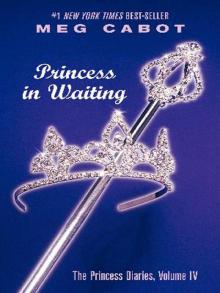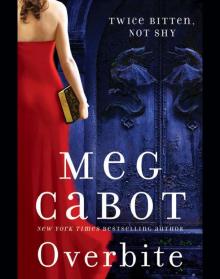Princess Lessons Read online
Page 2
ADDRESSING YOUR BETTERS
In Direct Conversation:
TITLE
CORRECT FORM OF ADDRESS
King or Queen
Your Majesty
Prince or Princess
Your Royal Highness
Niece, nephew, or cousin of the sovereign
Your Highness
Duke or Duchess
Your Grace
Earl, Marquis, Viscount, or Baron
My Lord
Countess, Marchioness, Viscountess, or Baroness
My Lady
Baronet or Knight
Sir (followed by first name)
Wife of Baronet or Knight
Lady (followed by first name)
COURTESY TITLES
CORRECT FORM OF ADDRESS
Son of duke, marquis, or earl
Lord (followed by first name)
Lady (followed by first name)
Daughter of duke, marquis, or earl
Children of lower peers, such as barons and knights
The Honorable (followed by first and last name, in indirect reference)
NONROYALS
CORRECT FORM OF ADDRESS
Boys under 18
Master
Men 18 and over
Mr.
Girls under 18
Miss
Women 18 and over
Ms.
Married women
Mrs. (unless they tell you otherwise)
Divorced women
Ms., or often Mrs. if using exhusband’s last name
Widows
Mrs.
[Except that you wouldn’t call Jennifer Aniston “Mrs. Pitt,” so I don’t think this stuff works in real life. Maybe just call everyone “Ms.”?]
[These comments you see in pink are from me, Princess Mia. Just so you know.]
INTRODUCTIONS TO ROYALS
It is all really very simple: When meeting royalty for the first time, commoners must bow or curtsy as they are introduced—particularly if they are residents of the country over which the person they are meeting is regent.
Everyone must bow or curtsy to a king or queen, but kings and queens do not have to bow or curtsy to people ranking below them, such as princes and princesses. Princes and princesses do not have to bow or curtsy to dukes and duchesses, dukes and duchesses do not have to bow or curtsy to earls and countesses, and so on. Americans do not have to bow or curtsy to anyone, because two hundred years or so ago they went to great trouble to disassociate themselves from the monarch who actually made their country possible…but Amelia asked me not to “get into that,” so I will desist.
Still, it is polite to bow or curtsy to emperors, kings and queens, and princes and princesses, whether they rule over you or not.
The Perfect Curtsy
Place your left foot behind your right foot, and bend slightly at the knees, then stand up straight again. It is not necessary to fling one’s upper torso onto the floor, as I understand some American debutantes like to do when they are introduced into society. A simple knee bend will do nicely, and you will have less of a chance of falling on your face.
The Perfect Bow
Keeping your shoulder and neck straight, bend forward at the waist, very briefly, then straighten up.
See? So simple.
[Principal Gupta, the head of Albert Einstein High, curtsied when she met Grandmère. It was the funniest thing I ever saw.]
INTRODUCTIONS TO NONROYALS
When you are introduced to someone for the first time, it is important to smile, look the person in the eye, and extend your right hand. Say, “Hello, I am Clarisse Renaldo, Dowager Princess of Genovia (or whatever your name happens to be).” When shaking hands, exert a confident, not overpowering grip. You are a princess, not a wrestler.
[But you don’t want to have a wimpy grip either, or people will think you aren’t self-actualized.]
When you are the one making introductions, be sure to include people’s first and last names. If you can’t remember someone’s name, introduce the person whose name you do know (“Do you know His Royal Highness, Prince William?”) and the person whose name you don’t know will usually introduce themselves.
TALK LIKE A PRINCESS
Conversational DOs and DON’Ts
When meeting someone for the first time, begin by asking his/her advice or opinion. Do not ask him/her yes-or-no questions. Something like “In what region is your summer palace located?” or “What did you think of that scintillating article on the Japanese royal family in today’s New York Times?” will do. Current events, popular movies, television shows, and music all make excellent conversation starters. You might also comment on the weather or the room in which you are standing.
[Only talk about the weather as a last resort. Weather is way boring.]
Do be a good listener:
Do not monopolize conversations, even if you are the only blue-blood in the room. Allow others to speak as well. Even if you are caught up in your own cleverness, remember to stop and ask your acquaintance about his opinion or experiences.
Do not gossip:
When you have just met a new person, it isn’t smart to ask him something like “Did you hear about the countess and Prince René?” because he might reply, “No, the countess is my wife. What about her and Prince René?” Suddenly you will feel very uncomfortable.
Do not swear:
Princesses do not use curse words except under extreme provocation, such as the severing of a limb or the loss of a priceless piece of jewelry down the bidet.
[Princesses don’t ridicule the looks, politics, religion, or extracurricular activities of others. Even cheerleading.]
EAT LIKE A PRINCESS
Formal Dining
It will happen. At some point you will be asked to a formal dinner. It is important that you familiarize yourself beforehand with the utensils that will be used.
Utensils are always positioned for use from the outside in (on the left of the plate) and the inside out (on the right of the plate). The first fork one reaches for is the one farthest from the plate. The opposite goes for knives on the other side of the plate. The knife closest to the plate is the knife used first, and so on.
[This is unlike the FOIL system in Algebra—First, Outside, Inside, Last. Always use the fork or knife closest to your left.]
Formal Place Setting (expected at state dinners, prom, etc.)
Service plate, positioned so pattern on plate faces diner
Butter plate, positioned above the forks at left of place setting
Wineglasses and water glass, above knives and spoons, on the right positioned by size
Salad fork, placed left of dinner fork
Meat fork, left of salad fork
Fish fork, left of meat fork
Salad knife, to the right of plate
Meat knife, right of salad knife
Fish knife, right of meat knife
Butter knife, positioned diagonally at top of butter plate
Soup spoon and/or fruit spoon, placed outside the knives
Oyster fork, beyond the spoons
Napkin
Understood? Très bien!
At a crowded dining table, the issue of which water glass, wineglass, or bread plate belongs to which diner can sometimes become confusing. This can be cleared up simply by forming your left thumb and index finger into the letter b and your right thumb and index finger into the letter d, as shown below. b = bread d = drink
b = bread d = drink
The bread plate to your left is yours. The drinking glass to the right is also yours.
Voilà!
[You don’t want to eat someone else’s bread by mistake. You really don’t want to drink from someone else’s glass. Especially Boris Pelkowski’s, which always has food floating in it.]
Dining DOs:
• Always wait until everyone is present at the table before taking your seat.
• Always place your napkin in your lap.
>
• Always wait until your hostess has lifted her fork before beginning to eat.
• Always cut food into bite-size pieces, using either the European style or the American style. In the European style, one cuts food by holding the knife in the right hand while securing the food with the fork in the left hand. Simply pick up the cut pieces of food with the fork still in the left hand, tines facing down. The American style is the same except that after cutting the food, lay the knife across the top edge of the plate and change the fork from the left to the right hand to eat, tines facing up. Either style is perfectly acceptable.
• Eat everything that is on your spoon or fork in one bite (take small portions).
• Remove seeds, bones, or pits from your mouth with your fingers (discreetly), and lay them on the side of your plate.
• Use your fingers to eat foods such as French fries, potato chips, sandwiches, and corn on the cob. Just be sure to wipe your fingers on a napkin after each bite—do not lick them.
• Always excuse yourself if you feel the need to leave the table midmeal. Place your napkin on your chair.
• When you are finished, lay your knife and fork beside one another across your plate, then wait for your hostess to rise before leaving the table yourself.
Dining DON’Ts:
• Do not start eating until your hostess does.
• Do not speak when your mouth is filled with food.
• Do not lift your pinky when raising your glass. [Even though Mrs. Thurston Howell III does this.]
• Do not cut your meat (or any food) into bite-size portions before you begin eating. Cut off only what you intend to put into your mouth at that time.
• Do not take huge mouthfuls of anything, no matter how good.
[Especially cold things, like sorbet.]
• Do not suck up the ends of noodles. Long pasta should be twirled into small bite-size portions on the end of the fork, against the bowl of a spoon or the edge of your plate.
• Do not re-dip a chip or crudité into a common bowl of dip if you have already taken a bite.
If, at a formal dinner—or even a casual meal with friends—you are offered a dish that you cannot or will not eat, simply say, “No, thank you,” quietly and politely. No need to explain why, but if it is because of your staunch adherence to a vegan lifestyle, you may tell your hostess so, if you can do it without the whole table overhearing you. Otherwise, just say no, merci!
[It’s not a good idea to try dropping something you are ethically opposed to eating, such as prosciutto-wrapped melon, onto the floor beneath your chair in the hope that your hostess’s dog will scarf it up. Chances are the dog won’t eat it either, and then it will just end up on the bottom of your shoe. Not that this ever happened to me.]
PRINCESS AND THE PEA (SOUP)
The dish that seems to confound most diners is not, as one might expect, the majestic lobster or prickly artichoke, but perhaps the simplest of all repasts: soup. Yes, soup. Between slurping and spoon-scraping, any number of disasters can ensue when soup is consumed incorrectly. The secret of soup is simple: away! Always spoon soup away from your person! Then lift the spoon to your mouth as you lean from the waist over the bowl. No hunching over the bowl like a doggie waiting for his kibble!
When the soup reaches your lips, sip it QUIETLY from the SIDE of the spoon. Contrary to popular opinion, in no culture is slurping EVER welcome. Not by royalty, anyway. And don’t shove the whole spoon into your mouth as if you are swallowing down cough syrup. SIP from the side. SIP!
When the soup in your bowl is at a level that you must tilt the bowl to reach it, tilt the bowl AWAY from you. Get it? Spoon AWAY, tilt AWAY. That way you will avoid causing a spill of
Niagara Falls proportions into your lap.
And no blowing on your soup! If it is too hot to eat, WAIT FOR IT TO COOL. AND NO, YOU MAY NOT SPOON ICE FROM YOUR WATER GLASS INTO YOUR SOUP. In some countries, the chef would rightly consider this the gravest of insults, and be justified in throwing you out of his dining room.
TABLE TALK FOR A PRINCESS
Appropriate Table Conversation for a Princess
It is considered rude in most countries to talk about politics or religion at the dinner table, unless you are dining with close friends. People do not wish to have their appetites spoiled by listening to views that might differ radically from their own, no matter how much you may wish to enlighten them about the errors of their ways. Save such lecturing for the cocktail hour, during which your victims might reasonably fortify themselves against such an onslaught.
PARTY PRINCESS
Princesses are often called upon to entertain. Whether you are hosting a ball or a small, informal tea, the duties of a hostess are always the same:
• Attempt to introduce guests who do not know one another, and engage them in a conversation that can be continued after you politely slip away to see to your other guests.*
• See that your guests are comfortable (it is inexcusable to leave off the air-conditioning on a hot day, or the heat on a cold one!) and provide ready access to food and drink.
• Mingle, mingle, mingle!
If you are the guest at a party:
• Arrive on time, or no later than fifteen minutes after the arrival time listed on the invitation. There is no such thing as “stylishly late”—just boorish!
• Members of the aristocracy are generally quite popular, and so are often invited to many events in a single night. In order to keep from showing favoritism to any one hostess, plan on spending about an hour at each ball or soiree—enough time for a cocktail. Dinner parties, however, are more difficult. Princesses should remain at a dinner party for at least one hour after a meal is served. Any departure earlier than this is vulgarly referred to by Americans as “dining and dashing.” If not expected at any other events that night, you may safely remain at any party until everyone else is departing, or until your hosts begin to look noticeably fatigued. Then it is polite to take your leave. Be sure to find your host or hostess before you go, to thank them for inviting you. If he or she asks you not to leave, or encourages you to stay, you may do so if you are so inclined and you feel the invitation is sincere.
• If you wish to bring a friend or small chien who was not on the original invitation list, you must ask your host or hostess ahead of time if this is all right.
[This is especially important if some of the other guests (such as Boris Pelkowski) have allergies and might start sneezing uncontrollably at the introduction of animal dander into the immediate environment.]
PRINCESS IN WRITING
Nothing says I appreciate you and all that you do for me like a thank-you note. Every princess should have her own royal stationery, preferably monogrammed with her royal crest, upon which she can pen thoughtful missives to her many admirers. Thank-you notes never go out of style, and are never unwelcome.
[If you don’t send thank-you notes when someone sends you a gift, you may not get a gift from that person ever again, because they’ll think you are ungrateful!]
The Art of the Thank-You Note
Send the note promptly after receiving the gift, preferably within the week. But a late note is better than no note at all.
The note should sound personal and sincere:
Dear Mamaw and Papaw,
I just love the adorable plaster lawn gnome you sent me! He looks so great on my fire escape (since I don’t have a lawn).
is much preferable to:
Dear Mamaw and Papaw,
Thank you for the gift.
Always mention the gift in the body of the note (plaster lawn gnome) otherwise the giver might think you just photocopied the note and sent the same one to everyone who gave you something.
If the gift arrived broken, or if you already have one exactly like it, do not mention this in your note.
If the giver has sent you money, mention in your note what you plan to do with the funds:
Dear Grandmère,
The v
ery generous check you sent me for Christmas is going straight to the Save the Whales fund! Thank you so much for helping me to save an orca.
A written thank-you note is obligatory:
• When you are the guest of honor at a dinner party or tribal ceremony
• When you receive birthday, graduation, holiday, or coronation gifts
• When you have stayed overnight with anyone who is not a close relative or friend whom you see frequently. A thank-you note is necessary in this case, even if you have thanked your host in person.
[For instance, I don’t have to send a thank-you note to Shameeka for inviting me to her slumber party, but I do have to send one to Tante Simone for letting me spend the night in her villa.]
• When someone sends you flowers, particularly Get Well flowers
• When you receive notes of condolence from anyone

 Bridal Boot Camp
Bridal Boot Camp Party Princess
Party Princess Princess in Waiting
Princess in Waiting Being Nikki
Being Nikki Abandon
Abandon Princess on the Brink
Princess on the Brink Darkest Hour
Darkest Hour Reunion
Reunion Princess in Pink
Princess in Pink Sweet Sixteen Princess
Sweet Sixteen Princess The Princess Diaries
The Princess Diaries Airhead
Airhead Princess in the Spotlight
Princess in the Spotlight No Judgments
No Judgments All-American Girl
All-American Girl Princess in Love
Princess in Love Forever Princess
Forever Princess Haunted
Haunted Shadowland
Shadowland Twilight
Twilight Princess Mia
Princess Mia Proposal
Proposal Remembrance
Remembrance Ransom My Heart
Ransom My Heart Underworld
Underworld Shadowland tm-1
Shadowland tm-1 Size 14 Is Not Fat Either
Size 14 Is Not Fat Either Darkest Hour tm-4
Darkest Hour tm-4 Airhead a-1
Airhead a-1 Royal Crush
Royal Crush The Princess Present (princess diaries)
The Princess Present (princess diaries) Royal Crown
Royal Crown Royal Wedding: A Princess Diaries Novel (The Princess Diaries Book 11)
Royal Wedding: A Princess Diaries Novel (The Princess Diaries Book 11) Princess Diaries, Vol. X: Forever Princess
Princess Diaries, Vol. X: Forever Princess Royal Wedding Disaster
Royal Wedding Disaster Allie Finkle's Rules for Girls: Glitter Girls and the Great Fake Out
Allie Finkle's Rules for Girls: Glitter Girls and the Great Fake Out Size 12 Is Not Fat hwm-1
Size 12 Is Not Fat hwm-1 Princess on the Brink pd-8
Princess on the Brink pd-8 The New Girl
The New Girl Allie Finkle's Rules for Girls: Moving Day
Allie Finkle's Rules for Girls: Moving Day Code Name Cassandra
Code Name Cassandra Mia Goes Fourth pd-4
Mia Goes Fourth pd-4 Sanctuary 1-4
Sanctuary 1-4 Missing You 1-5
Missing You 1-5 The Mediator 6: Twilight
The Mediator 6: Twilight Allie Finkle's Rules for Girls: Best Friends and Drama Queens
Allie Finkle's Rules for Girls: Best Friends and Drama Queens The Boy Next Door
The Boy Next Door Every Boy's Got One
Every Boy's Got One Princess Mia pd-9
Princess Mia pd-9 Haunted tm-5
Haunted tm-5 Overbite
Overbite Princess Lessons
Princess Lessons She Went All the Way
She Went All the Way Give Me Five pd-5
Give Me Five pd-5 Twilight tm-6
Twilight tm-6 Jinx
Jinx Runaway (Airhead #3)
Runaway (Airhead #3) Queen of Babble Gets Hitched qob-3
Queen of Babble Gets Hitched qob-3 Forever Princess pd-10
Forever Princess pd-10 Queen of Babble
Queen of Babble Boy Meets Girl b-3
Boy Meets Girl b-3 Pants on Fire
Pants on Fire Big Boned ху-3
Big Boned ху-3 Princess' Diaries pd-1
Princess' Diaries pd-1 Size 14 Is Not Fat Either hwm-2
Size 14 Is Not Fat Either hwm-2 Awaken a-3
Awaken a-3 Queen Of Babble: In The Big City qob-2
Queen Of Babble: In The Big City qob-2 Nicola and the Viscount
Nicola and the Viscount Allie Finkle's Rules for Girls: Stage Fright
Allie Finkle's Rules for Girls: Stage Fright Size 12 and Ready to Rock
Size 12 and Ready to Rock Perfect Princess
Perfect Princess The Bride Wore Size 12
The Bride Wore Size 12 1-800-Where-R-You: Missing You
1-800-Where-R-You: Missing You How to Be Popular
How to Be Popular Queen of Babble Bundle with Bonus Material
Queen of Babble Bundle with Bonus Material Allie Finkle's Rules for Girls: Blast from the Past
Allie Finkle's Rules for Girls: Blast from the Past Princess in the Spotlight pd-2
Princess in the Spotlight pd-2 Ready or Not
Ready or Not The Princess Diaries I
The Princess Diaries I Party Princess pd-7
Party Princess pd-7 Third Time Lucky pd-3
Third Time Lucky pd-3 Stage Fright
Stage Fright From the Notebooks of a Middle School Princess
From the Notebooks of a Middle School Princess Notebooks of a Middle-School Princess Bridesmaid-in-Training
Notebooks of a Middle-School Princess Bridesmaid-in-Training Boy Meets Girl
Boy Meets Girl Missing You
Missing You The Twilight
The Twilight Size 12 Is Not Fat
Size 12 Is Not Fat Code Name Cassandra 1-2
Code Name Cassandra 1-2 Valentine Princess
Valentine Princess Project Princess
Project Princess Reunion tm-3
Reunion tm-3 Remembrance: A Mediator Novel
Remembrance: A Mediator Novel When Lightning Strikes 1-1
When Lightning Strikes 1-1 Safe House 1-3
Safe House 1-3 Teen Idol
Teen Idol Queen of Babble Gets Hitched
Queen of Babble Gets Hitched Glitter Girls and the Great Fake Out
Glitter Girls and the Great Fake Out Moving Day
Moving Day Insatiable
Insatiable All American Girl
All American Girl The Boy Is Back + Every Boy's Got One Bundle
The Boy Is Back + Every Boy's Got One Bundle Big Boned
Big Boned Awaken
Awaken Princess in Training pd-6
Princess in Training pd-6